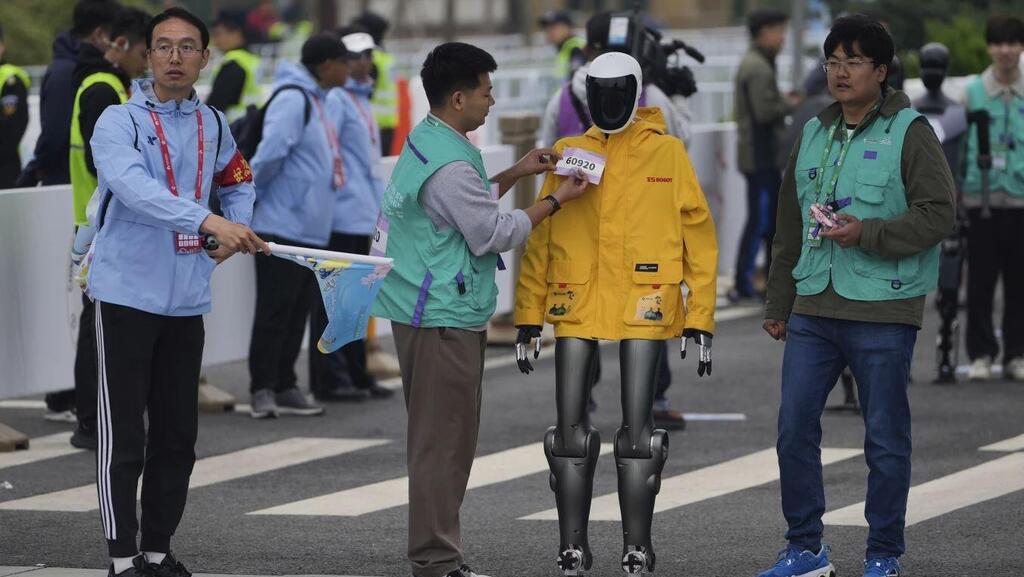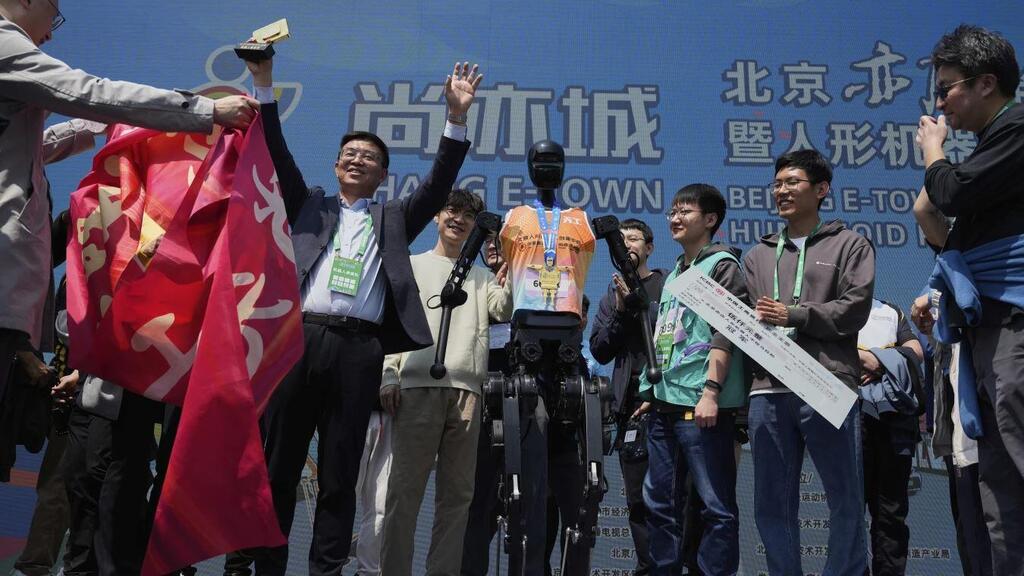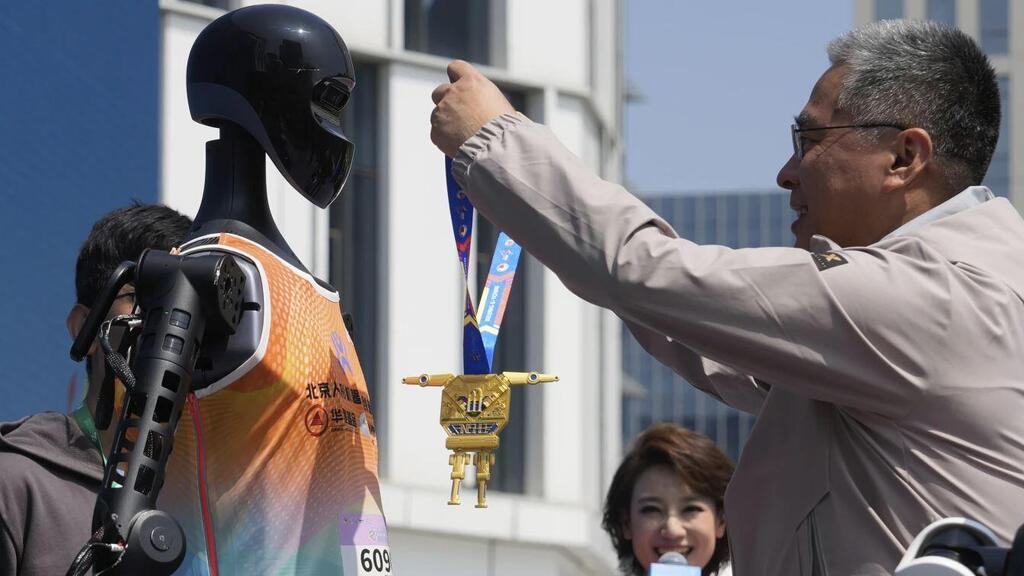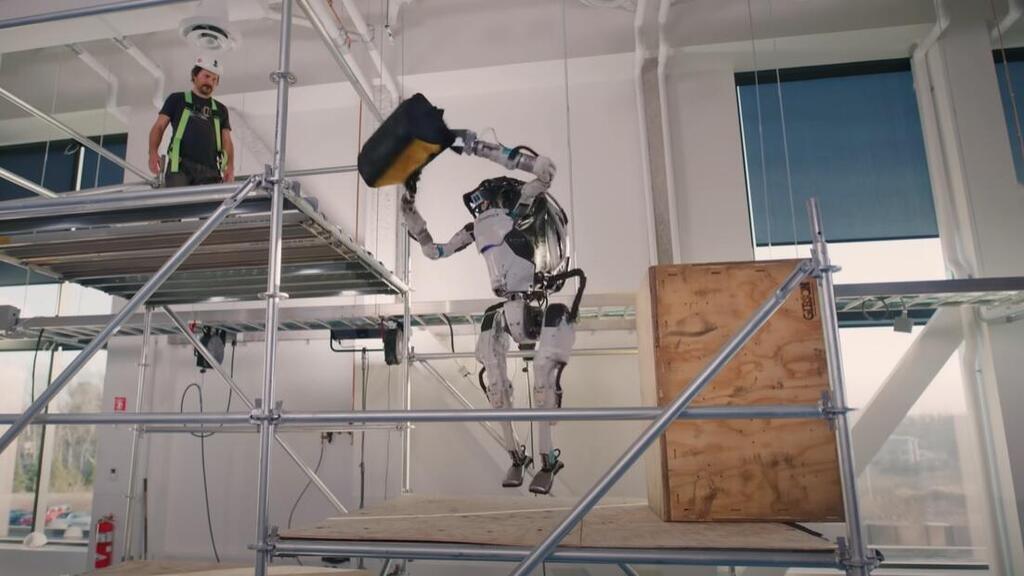In what looked like a scene from a sci-fi movie, dozens of humanoid robots lined up Saturday at the starting line of the Beijing half marathon, attempting to run alongside 12,000 human participants.
The event marked a global first: a hybrid race in which androids shared the course with people, each in a separate fenced-off lane, under the close watch of operators, engineers and technical teams.
The race was held in the Yizhuang district in southeastern Beijing, a major tech hub home to several of China's leading high-tech firms. The robots, developed by university labs, startups and government-linked companies, showcased advanced balance, stability and movement algorithms.
Still, none of them ran entirely on their own. Most were accompanied by humans — either remotely or on foot. Some were guided by remote control, while others were held by straps to prevent falls. As expected, social media lit up with reactions to the bizarre sight.
Not fast, but smart
The standout among the robots was the Tiangong Ultra, a 1.80 meter (5-foot-11) model built by Beijing’s Humanoid Robot Innovation Center. It completed the race in 2 hours and 40 minutes — a significant technological milestone, even if far slower than its human counterparts. The fastest human runner finished in just 1 hour and 2 minutes.
Like the other androids in the event, Tiangong Ultra didn’t rely on mechanical movement alone. It ran using a self-learning algorithm trained on real human running data. “We’re not just building robots — we’re building the digital athletes of the future,” Tang Jian, the center’s chief technology officer, said in an interview. “Our model is already among the most advanced in the world — perhaps even leading the field.”
Get the Ynetnews app on your smartphone: Google Play: https://bit.ly/4eJ37pE | Apple App Store: https://bit.ly/3ZL7iNv
During the run, Tiangong stopped three times to change batteries — the robotic equivalent of water breaks. The rules allowed for entire robot replacements in case of malfunctions, though each switch added a 10-minute time penalty.
A global tech rivalry
The event also carried geopolitical undertones. China has been racing to overtake the U.S. in the field of humanoid robotics. While American models like Boston Dynamics' Atlas and Figure 01 have garnered global attention, China is working to prove it’s no longer playing catch-up — it's now aiming to lead.
In a 2023 policy paper, China’s Industry and Information Technology Ministry labeled humanoid robotics a “new technological frontier,” setting a goal for mass production by 2025 with fully domestic supply chains and core components.
Recently, Chinese robots have gone viral for performing backflips, riding bikes, breakdancing and even kicking in capoeira style. State media have been actively promoting these images as part of a broader economic strategy that sees robotics as a major growth engine for the coming decades.
Humans still lead — for now
Despite the impressive showing, it’s clear that humanoid robots aren’t ready to replace human runners. Many struggled to keep pace, frequently stalled or required near-constant support. Several human participants paused mid-race to snap photos of the machines, treating them more as a curiosity than serious competitors.
Still, the Beijing race underscored the growing presence of humanoid robots in everyday life — not just in labs or test courses but in public spaces. Already, robots are used for logistics at Amazon and Alibaba warehouses, as service staff in hotels and airports and as therapeutic aides in hospitals and nursing homes in Japan.
In the defense sector, militaries and police forces are testing human-like robots capable of navigating terrain and operating in hazardous environments. The race wasn’t just a tech demo — it was a glimpse of a future where robots are deeply embedded in the fabric of daily life.






